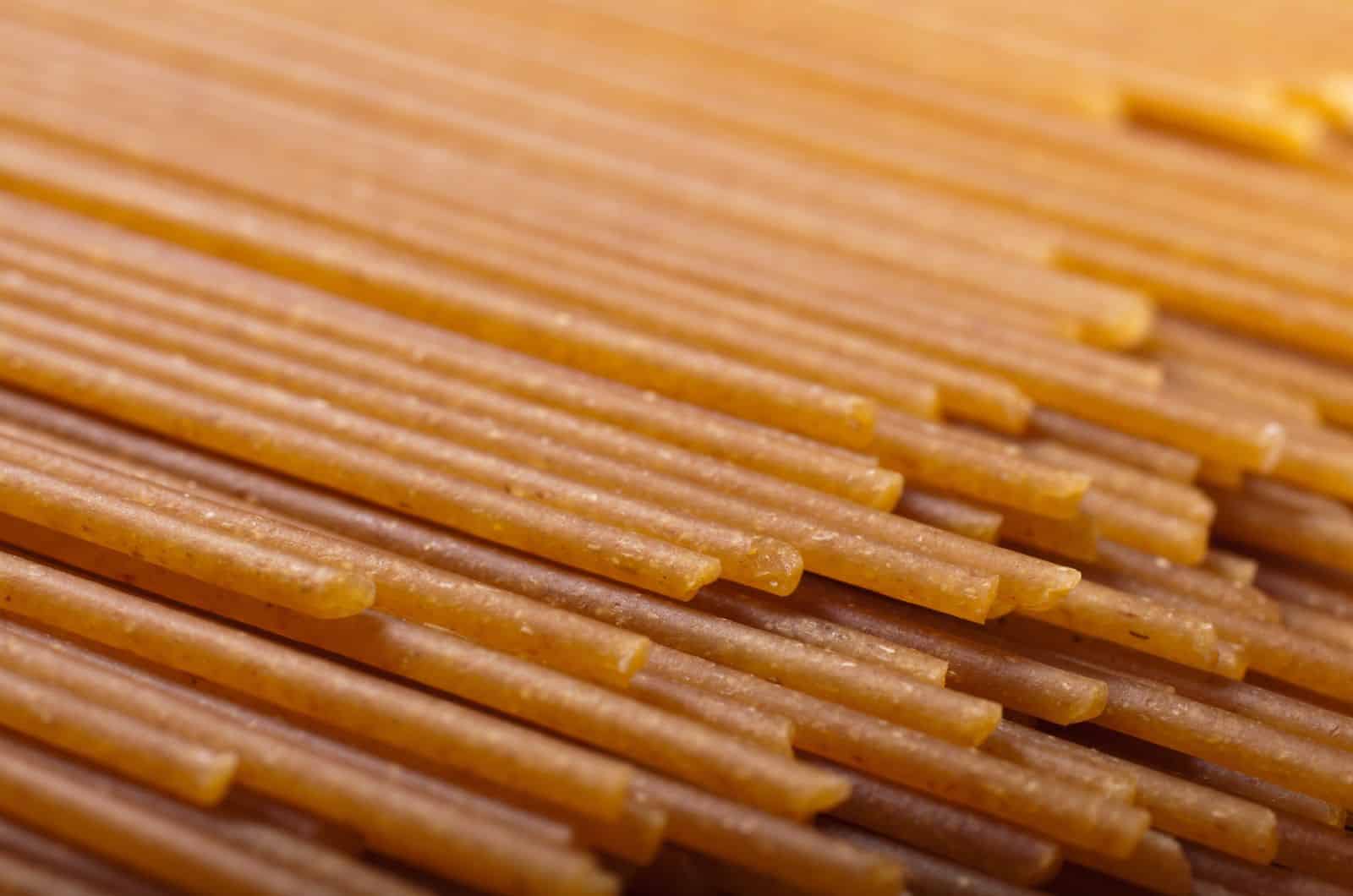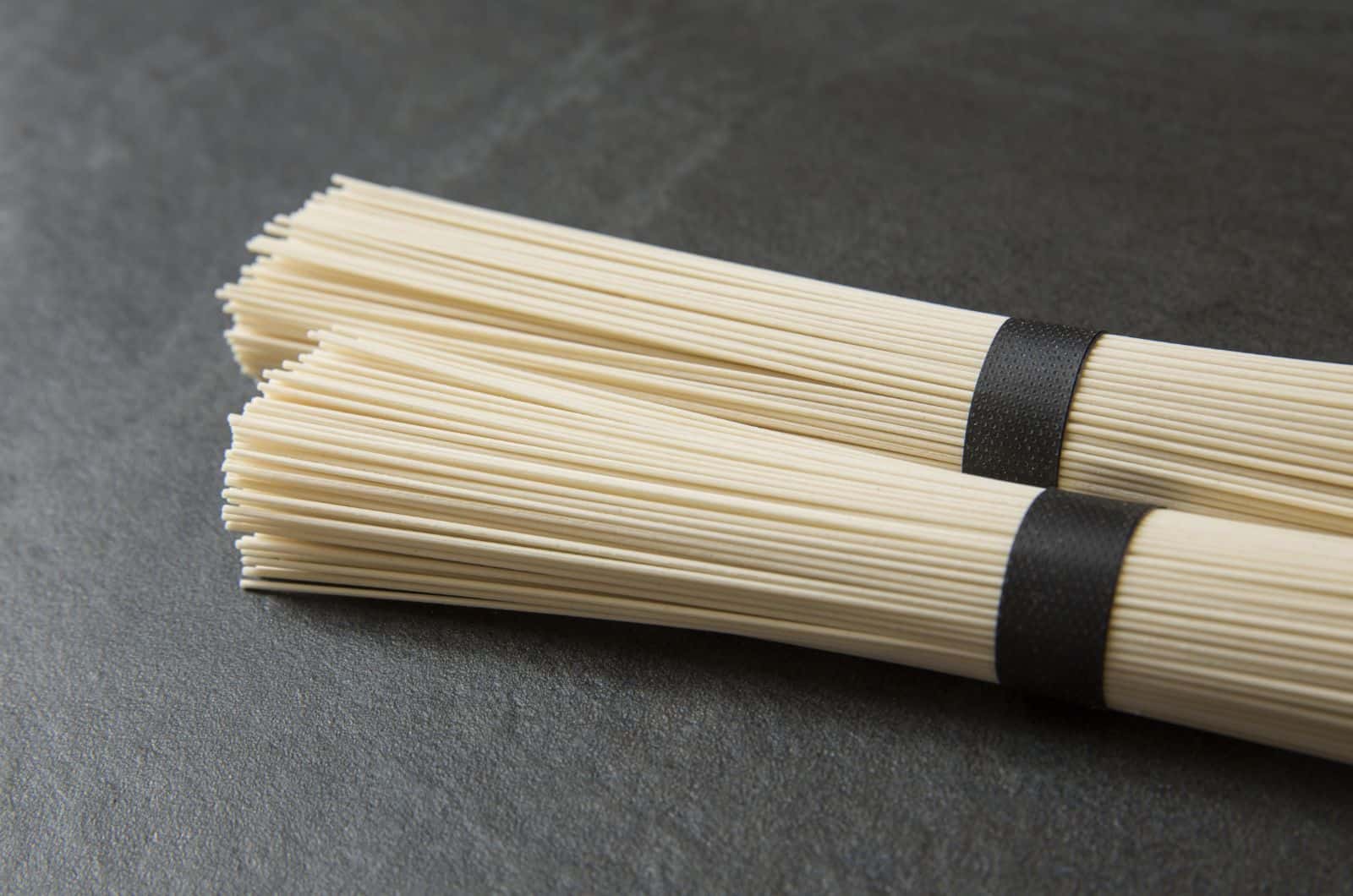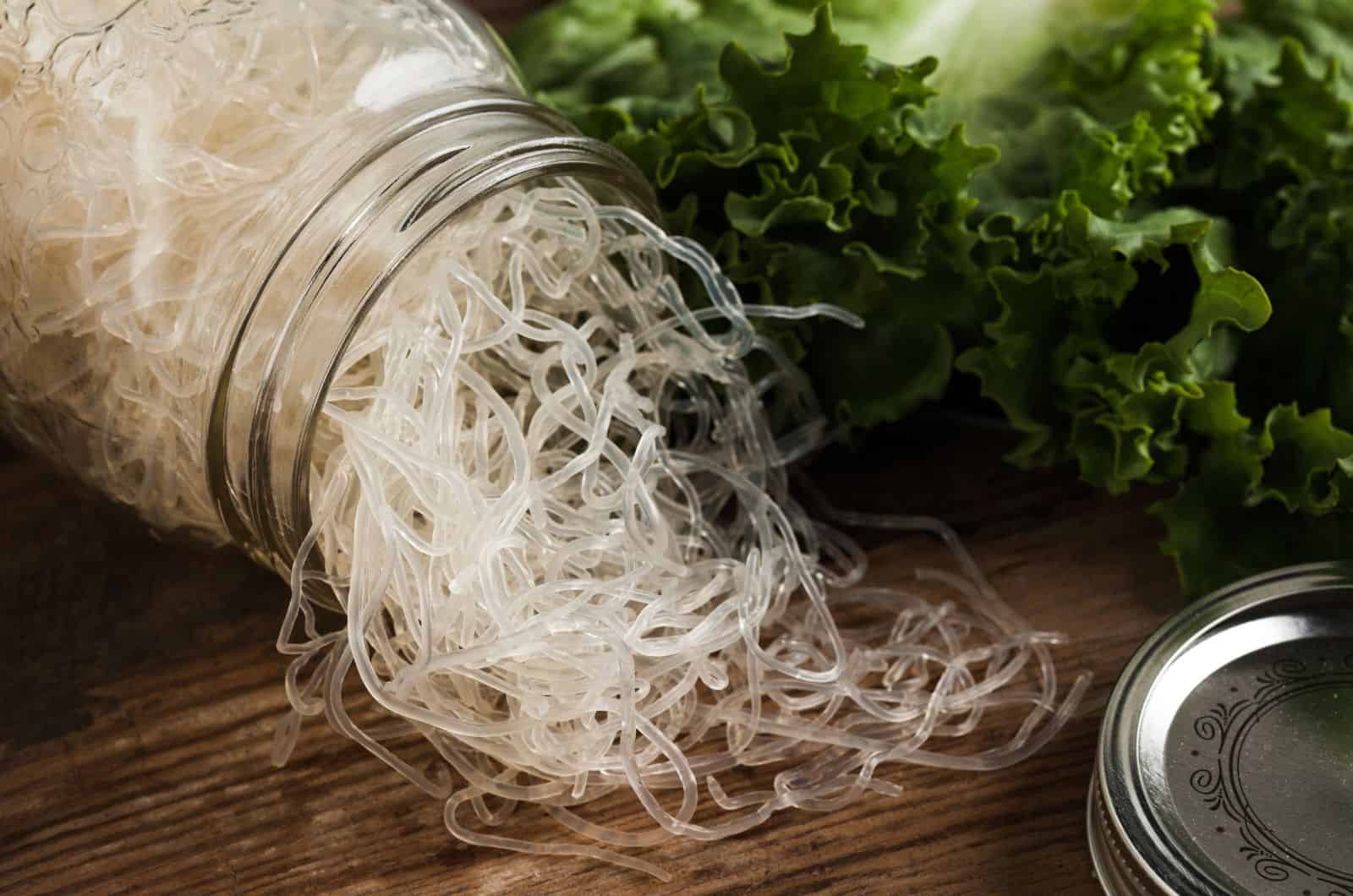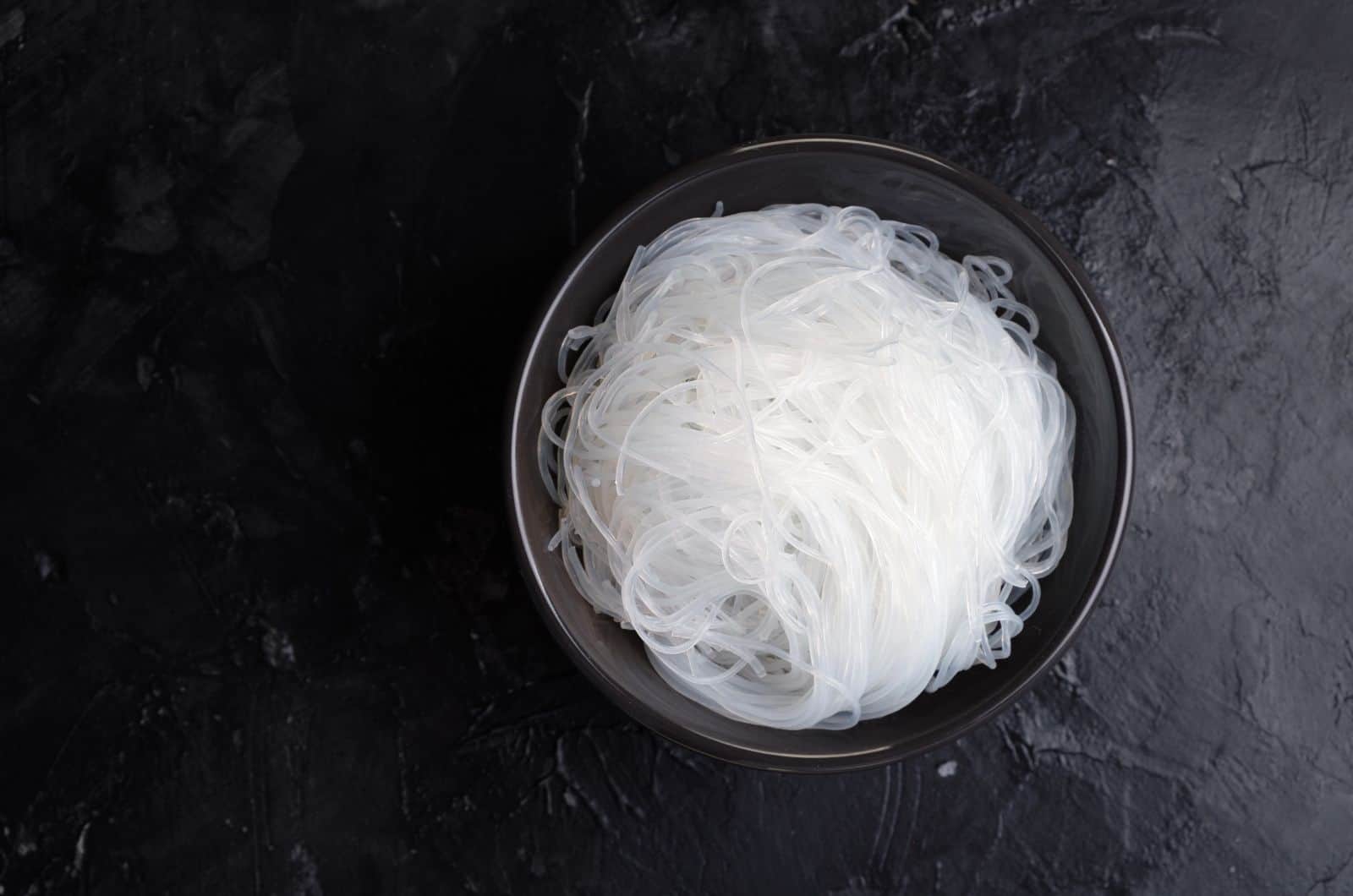You have probably heard about soba noodles recently. They are a staple in Asian cuisine, but they are gaining more and more popularity in the US because they are not just very delicious, but also amazingly healthy.
Soba noodles are rich in vitamins, minerals, proteins, carbohydrates, and fiber.
These Japanese noodles are made from buckwheat flour and they are shorter and thinner than ordinary spaghetti noodles.
Soba noodles have an earthy, nutty flavor and ga rainy texture. Besides that, they are also gluten-free, which makes them suitable for all people who love good noodle dishes, including those who are intolerant to gluten.
You can either cook them and enjoy them with a delicious dipping sauce or you can serve them in a Japanese noodle soup. Those are the two best ways to serve soba noodles and enjoy them to the fullest.
But, if you are not in Japan at the moment or there is no Asian supermarket nearby, it could be a potential problem to find these noodles in your local grocery store. But, don’t worry. There is a solution because there are soba noodle substitutes that can serve you very well.
In order for you to find out what those substitutes are, your best bet is to continue reading.
What Are The Best Soba Noodle Substitutes?
Following is a list of the best soba noodle alternatives that you can find. If you read carefully, I am sure that you will find the type of noodle that will serve you as the best soba noodle replacement.
1. Whole Wheat Spaghetti

First on my list of the best soba noodle substitutes ais whole wheat spaghetti or whole wheat noodles. As the name suggests, this spaghetti is made of whole grain.
Although they are not gluten-free options like soba noodles, they are full of nutrients just like those same soba noodles.
And that is exactly what makes them a good alternative to soba noodles. Besides that, they are also very easy to find in the grocery store. The flavor is very similar as well, and the texture is not far from the texture of soba noodles either.
And, when it comes to shape, whole wheat spaghetti comes in all shapes so you won’t have a problem choosing the best one for your noodle dish.
Noodles are one of the best sides for sandwiches.
2. Ramen Noodles
Another alternative for soba noodles is noodles made from wheat flour, salt, water, and alkaline water, known as kansui.
They are yellow in color and firm in texture. And that is, truly speaking, not that similar to soba noodles. They are also not gluten-free and do not possess that level of nutritional value.
But, you can easily find them, not just in the Asian market, but in most grocery stores. And they are very cheap. Also, they possess a neutral flavor which makes them suitable for almost any type of dish.
Ramen noodles are suitable for salads, stir-fries, soups, and hot broth with various types of veggies and meat. One of the most popular Japanese dishes that incorporate ramen noodles is known as Tan Tan Ramen.
So, all in all, they can serve as a decent substitute for soba noodles.
3. Somen Noodles

Somen noodles are much like ramen noodles. They can be made out of whole wheat, but are not necessarily made out of it. So, when they are not, the nutritional value is not as high as in the case of soba noodles.
Also, they are not gluten-free, which limits the number of people who can consume them. But, the texture is quite similar to that of soba noodles and, just as is the case with ramen noodles, the flavor is neutral.
That means that you can use these noodles in any type of dish. They pair particularly well with grated ginger and chopped scallions.
They also can be found in any grocery store and are very affordable. All in all, they can be a great option when substituting your soba noodles.
4. Udon Noodles
Another soba noodle substitute is the so-called udon noodle. Much like ramen noodles, these kinds of noodles are not gluten-free since they are made out of wheat flour. They are also not as nutritious as soba noodles.
But, they have a very mild flavor that can take on the flavors of the other ingredients of the noodle dish in a somewhat similar way to ramen noodles, which are flavorless.
When it comes to texture, udon noodles possess a somewhat chewy texture and they are much thicker than soba noodles.
Udon noodles can easily be found in most grocery stores and you can incorporate them into stir-fries with meat and vegetables, as well as in curry sauces and noodle soup.
5. Yakisoba Noodles
Yakisoba noodles are a Japanese type of noodles that can be a decent replacement for soba noodles in many dishes, such as stir-fries and others that incorporate fried meat and veggies.
They have a very similar flavor to soba noodles and ramen noodles, but with a hint of sweet undertones which makes their flavor profile very unique.
Although they can’t be found easily in ordinary grocery stores, if you find yourself in an Asian market or grocery store, you can buy them for a very low price and that is, among other things, what makes them a decent soba noodle substitute.
Yakisoba noodles can be paired very successfully with some ingredients like cabbage, pork, onions, carrots, salt, pepper, and yakisoba sauce, as well as with some garnishes like seaweed powder, fish flakes, and pickled ginger.
6. Kelp Noodles

As the name suggests, this type of noodle is made of kelp. Kelp is a type of seaweed plant and is extremely healthy. Kelp itself is used for many medicinal purposes.
So, it is not a surprise that kelp noodles possess a high nutritional value in terms of vitamins and minerals. They are also gluten-free and low in calories.
All this is the case with soba noodles as well, so we can easily conclude that this can be a great substitute for those same soba noodles.
Kelp noodles are somewhat crispy and have a salty umami flavor from seaweed. The flavor is not so strong, so it is best to incorporate kelp noodles with ingredients that have a stronger flavor. They are very suitable for various salads, soups, vegetable dishes, and stir-fries.
7. Rice Noodles
Rice noodles can definitely be a great alternative to soba noodles since they are gluten-free as well. They are made from water and rice flour, so they are also considered healthy.
When it comes to texture after they are cooked, they provide a somewhat tender, chewy texture. However, the flavor is not that similar to that of soba noodles since it is almost tangy.
Many people are not enthusiastic about this kind of flavor but, actually, there is a catch. When you add some ingredients that have stronger flavors, rice noodles tend to absorb them very well.
So, you are not doomed to a tangy flavor after all. The best places for rice noodles include broths, stir-fries, and soups. They can also be used as a base for fish and meat.
To end, rice noodles can be easily found in most Asian grocery stores and they are very cheap as well.
See Also: 9 Main Differences Between Egg Noodles Vs Rice Noodles
8. Butternut Squash Noodles
Butternut squash noodles are categorized as noodles as well and they are also gluten-free. And that is that actually. They are not similar in texture, flavor, or nutritional value to soba noodles.
But, I have to emphasize that they are very healthy since they are vegetable noodles and they can be easily incorporated into any kind of dish.
Butternut squash is very low in calories and very high in some important vitamins and minerals like vitamins A and C, as well as minerals like magnesium and potassium.
You can use store-bought butternut squash noodles, but you can also easily make your own if you have butternut squash on hand.
It is best to use a spiralizer, but you can also use a fork to rip apart the soft part of the squash to look like spaghetti.
9. Cellophane Noodles

Cellophane noodles are known by a few other names like bean thread noodles, Chinese vermicelli, and fensi.
They are made from water and starch. That starch can be from mung beans, tapioca, potatoes, or sweet potatoes.
Mung beans are most commonly used. Cellophane noodles have a transparent appearance, which is where they get their name. They are mostly deep-fried for a crunchy, puffy texture.
Also, they have no taste, so it is best to incorporate them into stews and stir-fries. Just like soba noodles, cellophane noodles are also gluten-free so they are suitable for most people.
10. Quinoa Spaghetti
Although not all people recommend quinoa spaghetti as a soba noodle substitute, it actually can be a decent alternative. The main reason is the nutritional value which is extremely high since quinoa is one of the healthiest herbs on earth.
It is also a great alternative for those who suffer from celiac disease since it is gluten-free.
The texture of quinoa spaghetti is similar to that of traditional and whole wheat pasta, and the flavor is not that prominent so it can be easily added to any kind of dish.
One real problem when it comes to this kind of noodles is that they are somewhat harder to find in ordinary grocery stores.
But, if you really want them to enrich your dish with all those vitamins and minerals, you can always find them in most health shops or online.
11. Zucchini Noodles
If you are looking to cut carbs in your diet and to avoid gluten as well, then zucchini noodles could be a great soba noodle substitute for your noodle dish.
As the name suggests, zucchini noodles are made from zucchini, a type of summer squash that is loaded with nutrients and because of that possesses many health benefits.
So, if you are looking for a gluten-free and additive-free option, alongside high nutritional value, zucchini noodles could be your best bet.
You can buy these noodles in almost any grocery store or supermarket, but it is even better to make your own if you have some fresh zucchini and a spiralizer.
12. Beet Noodles

Beet noodles represent a very unique type of noodles. They have a gorgeous purple color, something similar to beets themselves. They have a unique and distinctive flavor that is often described as sweet, earthy, and slightly tangy.
Pronounced sweetness comes directly from the flavor profile of beets.
These noodles are usually not store-bought ones. Rather, they are made at home. Using a spiralizer, you can easily make them on your own, of course, if you have some fresh beets.
They are very healthy. They are also gluten-free and you can use them in almost any type of dish. They can be a good side dish for pan-fried fish or goulash.
I also have to emphasize that, when they are stored properly, they can be preserved for quite a long time in the refrigerator or freezer.
In the refrigerator, they can keep for about 4-5 days, and in the freezer for up to 3 months.
13. Korean Buckwheat Noodles
Korean buckwheat noodles, also called naengmyeon, are the Korean version of soba noodles. Soba noodles are popular in Japanese cuisine and Korean buckwheat noodles are just as popular in Korean cuisine.
As the name suggests, they are also made from buckwheat flour so they are gluten-free as well. The nutritional value is also very high. Just like soba, Korean buckwheat noodles can be served cold in a savory broth and topped with fresh veggies and fish.
There is also a broth with spicy mustard oil, clear and deadly, with a bit of vinegar (both white vinegar and white wine vinegar, as well as others), which incorporates these Korean buckwheat noodles. That is one of the most common dishes in which these noodles are used.
14. Homemade Soba Noodles
And last, but not least, are the homemade soba noodles. If there is nothing that can satisfy you on this list of soba noodle substitutes, then you can freely make your own using a few ingredients.
You will need 1 cup of buckwheat flour, 1/2 cup of spelt flour, and about 140 ml of hot water to make a mixture. Using this mixture, you will knead the dough, flatten it, roll it out, and finally cut the noodles.
Then, you can cook those noodles in salted boiling water. The cooking time is about 1 minute. After cooking, you can rinse them under cold water and finally drain them and they will be ready in a matter of minutes.
You can use your own soba noodles in any soba noodles recipe as the main ingredient and enjoy them fully.
I also have to emphasize that you do not have to add spelt flour if you are allergic to gluten. You can freely use some other kind of flour like, perhaps, oat or almond flour.
Know Your Best Kind Of Noodles
So, soba noodles are made from 80% buckwheat flour and 20% wheat flour and they can also contain ume plum, green tea powder, seaweed, and wild yam. They are gluten-free and extremely healthy since they possess a high amount of vitamins and minerals.
But these soba noodle substitutes are also a great option for your favorite noodle dish since most of these options are also very healthy and some of them are gluten-free as well. You can easily incorporate them into most of the dishes that require soba noodles and you can enjoy their amazing taste and texture without any guilt.

